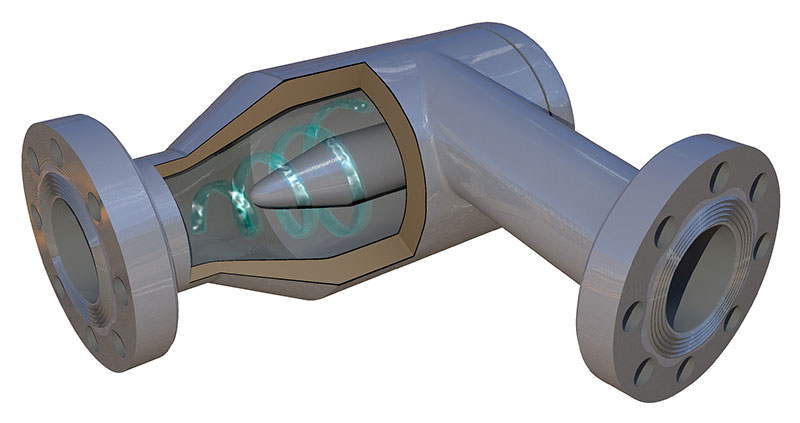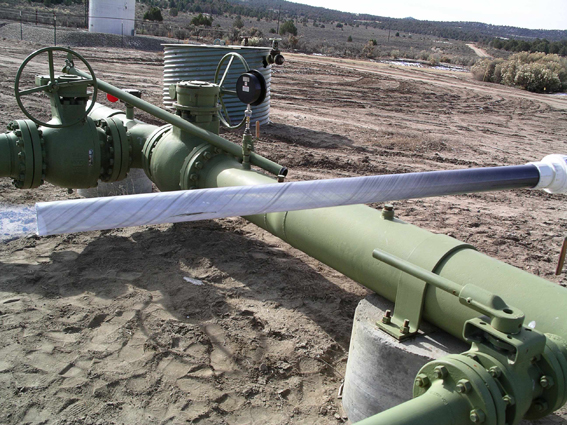The Vortex tool develops a tornado in a pipe.
This proven, patented process forces heavier liquid-bearing fluids to the outside of the pipe in a slowly moving helical pattern while lighter gases are pulled to the center of the spinning vortex and travel at substantially higher velocities. This development of efficient, two- or three-phase flow (oil, water, and/or natural gas) improves pipeline efficiencies and reduces pressure loss.
In long gathering lines with significant changes in elevation, Vortex prevents liquid from dropping out and accumulating at low points, thereby reducing problems with freeze-ups in winter, reducing the need for drips or pigging, and recovering more liquids. This organized, helical flow also reduces slugging, which improves capacity at the processing plant. In paraffin-prone flowlines, or those where chemical treatments are in use, Vortex improves chemical effectiveness, substantially reducing their cost and use.
The proprietary device combines very specific geometry, precise machining, and the laws of applied fluid dynamics to optimize the flow of materials within a pipe. As a stream of gases and liquids enters the Vortex tool, a “bluff body” in the flow causes the flow stream to spin rapidly. The high, angular acceleration slings the heavier liquid towards the pipe wall. As this spinning flow moves through the device, the configuration allows the spin angle to relax to a very efficient value. Although the visual on this flow does not last for very long, the benefits of Vortex has been seen in lines over six miles long.
The consequence of the liquid moving (like the rifling on a gun barrel) is that the no-flow boundary at the edge of the central gas flow is moving, resulting in a lower differential velocity between the bulk flow and the outer edge of the flow, which yields a lower shear force and a lower pressure drop due to decreased friction. A second benefit of the tool is to eliminate the slip between liquid droplets in the flow and the gas stream, reducing the amount of work the gas must do as it moves, thereby reducing the total pressure drop.
Downhole Vortex tools create similar benefits. The organized flow developed by the tool reduces flowing bottom hole pressure and improves efficiency in terms of lifting liquids. By extending the free-flowing life of the well below the critical rate, Vortex increases velocities and water removal. Vortex also sees a reduction in the need to treat wells with soaping solutions and, consequently, a reduction in the chemical/surfactant use. By removing the near-wellbore liquids, Vortex sees production increases (if the well has more to give), stabilized pressures, and reduced slugging.
For more on surface applications, see here.
For more on downhole applications, see here.


